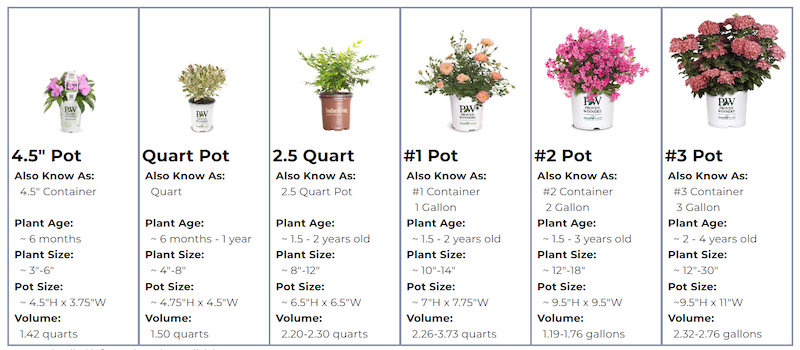Knowing the size of a garden planter is helpful for various reasons. When you have the bottom diameter, you can find a saucer that fits, and with a few more measurements, you can figure out the total capacity, ensuring you purchase enough potting mix. Knowing the size of a garden planter also makes it easier to shop for new planters, so if you want something bigger or smaller, you know what to look for.
Getting an accurate measurement of a planter can be tricky, especially if the planter is round, oddly shaped, or full of soil. Here’s what you need to know to measure a garden planter for an accurate size.
Tips to Measure a Garden Planter for a Saucer
Planters are much easier to measure when empty. When measuring for a saucer, measure the exterior or outside of the planter.
Get the diameter of an empty garden planter by flipping the planter upside down. Set the planter on a level surface and get the size using a tape measure. Place the tape on the edge and measure straight across to get the diameter of the planter. Measure at the widest point. You may need to move the tape back and forth to get the correct size.

Many planters are wide at the top and narrow at the bottom, making it difficult to measure the bottom, especially when the planter is full. Place the planter on a level surface on a patio, sidewalk, or driveway. Use a piece of chalk or masking tape to mark one edge and eyeball it to mark the opposite edge directly across from the first mark. Remove the planter and measure the distance between the marks. You can do this on a deck, but make sure both edges are above the boards, not the gaps between boards, so you have a spot to mark.
When measuring a garden planter for a saucer, take the diameter and add one to two inches for the ideal saucer size. A saucer should be slightly bigger so the container easily fits inside.
Measuring for a Cover Pot
Knowing the bottom diameter of a garden planter is also helpful if you are using the container as a cover pot and repurposing a nursery pot as the inner container. Measure from the inside when possible to get an accurate diameter or width. Our nursery pots are available in the following sizes to help you select an appropriately sized cover pot.
- 4.5” pot = 4.5” tall by 3.75” wide
- Quart pot = 4.75” tall by 4.5” wide
- 2.5-quart pot = 6.5” tall by 6.5” wide
- #1 pot = 7” tall by 7.75” wide
- #2 pot = 9.5” tall by 9.5” wide
- #3 pot = 9.5” tall by 11” wide

How Much Soil Does a Garden Planter Hold?
When you have the measurements of a planter, you can determine the capacity and buy an appropriate amount of potting mix. Keep in mind that if you measure from the outside of the planter, your measurements will be slightly bigger because they include the walls of the container. Measure an empty container from the inside to get the most accurate size. However, measuring from the outside still gives you a reasonable estimate.
For a tapered garden container, take measurements at the widest point. The answer will be larger, but the difference will be insignificant, and you’ll still have a good estimate of how much potting mix is needed.
Measuring Square or Rectangular Planters
For a square or rectangular planter, measure the width and the length of the opening, then measure the depth. Take the measurements in feet (not inches) and multiply all dimensions together (width x length x depth). The answer will be the total capacity in cubic feet.
Measuring Round Planters
Getting the capacity of a round garden planter is simple. Once you have the diameter of a round planter (the distance across the top of the planter), measure the depth or the distance from the bottom to the top. Take the measurements in feet (not inches). Multiply the depth by the diameter and by 3.14 (π). The answer will be the capacity of the round planter in cubic feet.
 |
Author Alison Cotsonas - Published 05-16-2023 |
